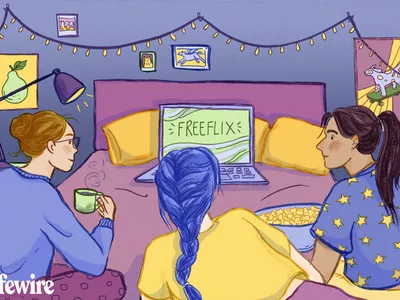
Unfolding Excellence: OnePlus's Answer to Bendable Discomfort

Unfolding Excellence: OnePlus’s Answer to Bendable Discomfort
Key Takeaways
- The OnePlus Open is a tablet-like foldable phone with a phone-sized display on the outside and a larger screen inside, giving it potential to break into the foldable phone market.
- The device is lightweight and has a reasonable size, providing a great feel when opened and closed. It offers excellent performance and battery life, along with a solid camera quality.
- However, the OnePlus Open has a comically large camera bump and lacks wireless charging and higher IP rating. There are also a few software bugs present, although OxygenOS includes useful features for a foldable.
OnePlus is known for making phones that offer high-end features at an affordable price. But the company has been dipping into new areas lately, such as the OnePlus Pad and OnePlus Watch . Now, OnePlus is entering the foldable phone market with the OnePlus Open, and it’s starting with a bang.
The OnePlus Open is a tablet-like or “book-style” foldable, which simply means it opens horizontally with a phone-sized display on the outside and a larger screen inside. The market for this type of foldable is not quite as crowded as the vertical flip-style foldables. In the US, it’s essentially the Samsung Galaxy Z Fold series and the more recent Pixel Fold . There’s a lot of potential for OnePlus to break into this market.
I’ve been using the OnePlus Open as my daily driver for two weeks and there’s a lot to say about a foldable phone, especially when it’s the first one from a company.
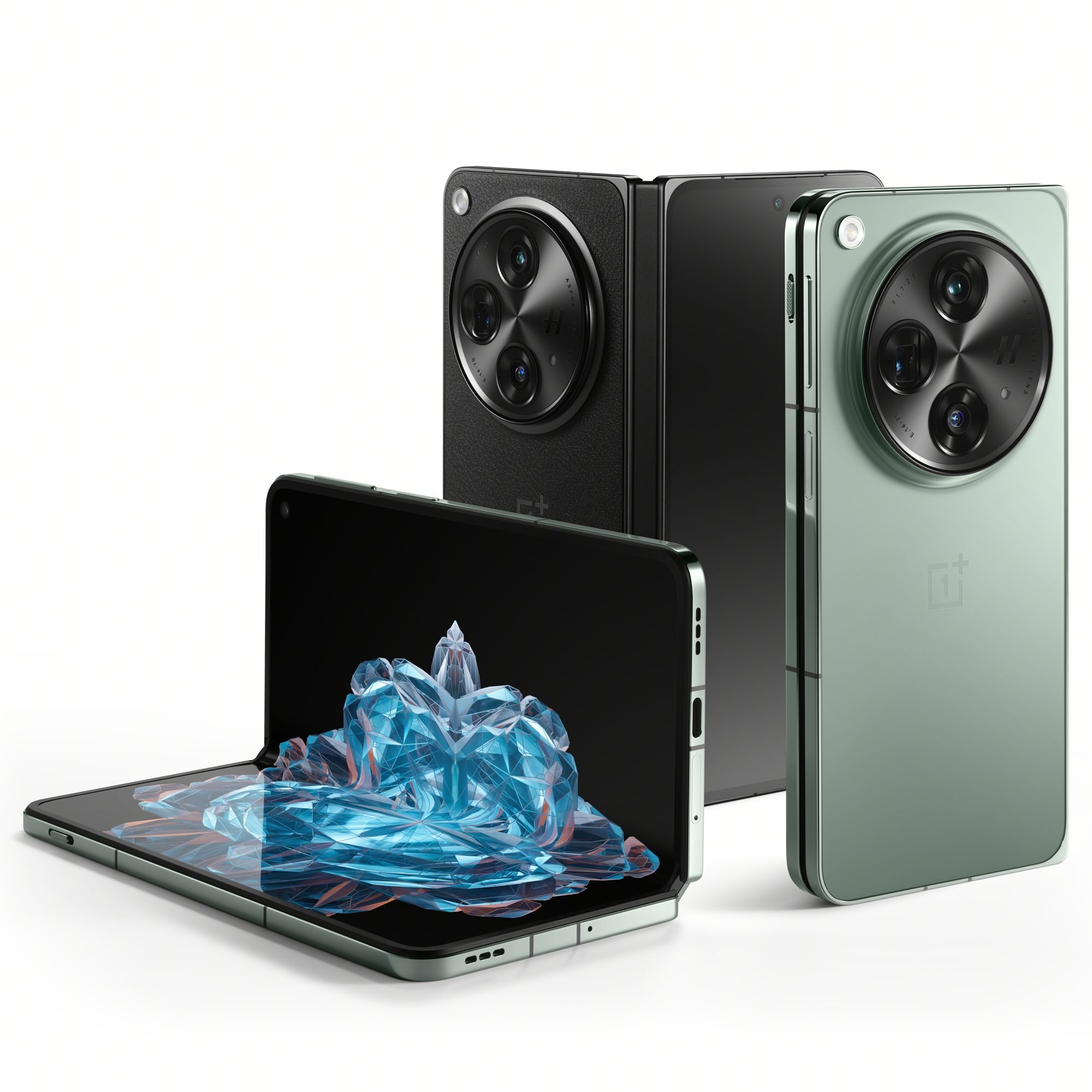

OnePlus Open
8/ 10
The OnePlus Open is a tablet-like foldable phone. It features a phone-sized outside display and nearly square inside display, along with a massive camera array on the back.
SoC
Qualcomm Snapdragon 8 Gen 2
RAM
16GB
Storage
512GB UFS 4.0
Battery
4,805 mAh
Ports
USB Type-C 3.1
Operating System
Android 13 (OxygenOS 13.2)
Front camera
20 MP f/2.2 91-degree FOV 0.7 µm pixels, 32 MP f/2.4 88.5-degree FOV 0.7 µm pixels
Rear camera
48 MP f/1.7 85-degree FOV 1.12 µm pixels, 64 MP telephoto 3X optical zoom f/2.6 33.4-degree FOV 0.7 µm pixels, 48 MP f/2.2 114-degree FOV 0.8 µm pixels
Dimensions
153.4 mm x 73.3 mm x 11.7 mm (Emerald) 11.9 mm (Black) folded, 153.4 mm x 143.1 mm x 5.8 mm (Emerald) 5.9 mm (Black) unfolded
Colors
Voyager Black, Emerald Dusk
Weight
239 g (Black), 245 g (Emerald)
IP Rating
IPX4
Security
Side-mounted Fingerprint Sensor
Cover display
6.3-inch Super Fluid AMOLED with LTPO 3.0, 2484 x 1116, 431 ppi, 1400 / 2800 nits, 10-120 Hz dynamic
Interior display
7.82-inch, Flexi-fluid AMOLED with LTPO 3.0, 2440 x 2268, 426 ppi, 1400 / 2800 nits, 1-120 Hz dynamic
Pros
- Lightweight, reasonable size feels great opened or closed
- Excellent performance and battery life
- OxygenOS includes useful features for a foldable
- Camera quality is super solid
Cons
- Camera bump is comically large
- A few bugs in the software
- No wireless charging and only IPX4 are a bummer
Expand
OnePlus Open Design: Size Matters
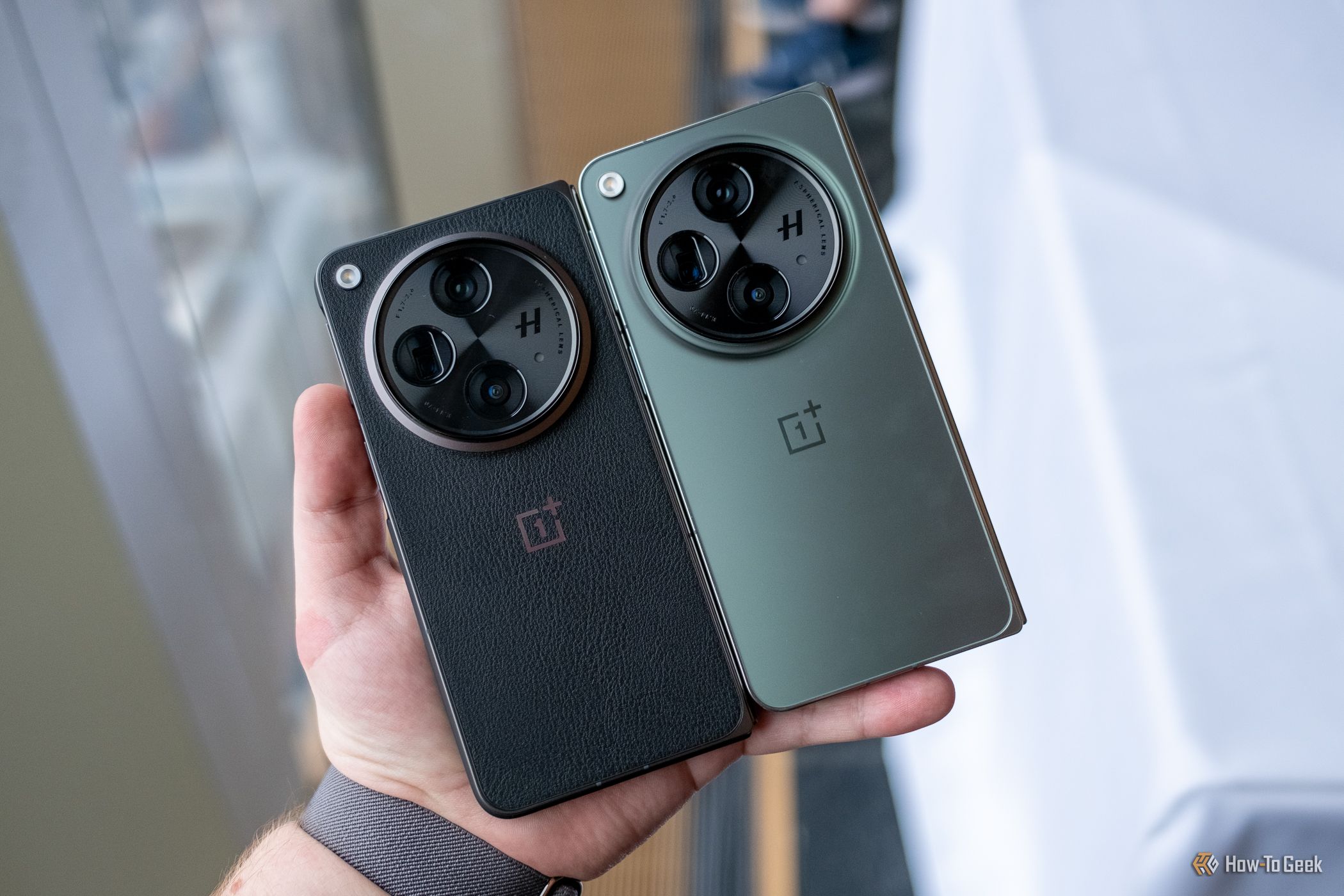
Justin Duino / How-To Geek
Despite being a very different type of device, the design of the OnePlus Open fits right in with the company’s existing lineup of non-foldable phones. The folding design is obviously the star of the show, but you can’t miss the massive circular camera module on the back either. I have a lot to say about that camera bump, but let’s talk about build materials first. OnePlus has made some interesting choices in this department.
Durability is a big deal in the world of foldables. Most foldable phones feature stainless steel bodies for this very reason. The downside to stainless steel is weight, and OnePlus did a lot to cut down on the weight of the Open. Hinges made by Oppo (OnePlus’ parent company) and other manufacturers include around 100 or more parts. OnePlus reduced the number down to a nice 69. The hinge parts are made of lightweight alloys, and the flexible display is supported by carbon fiber. Check out Michael Fisher’s video for a fascinating look at the OnePlus Open’s build process.
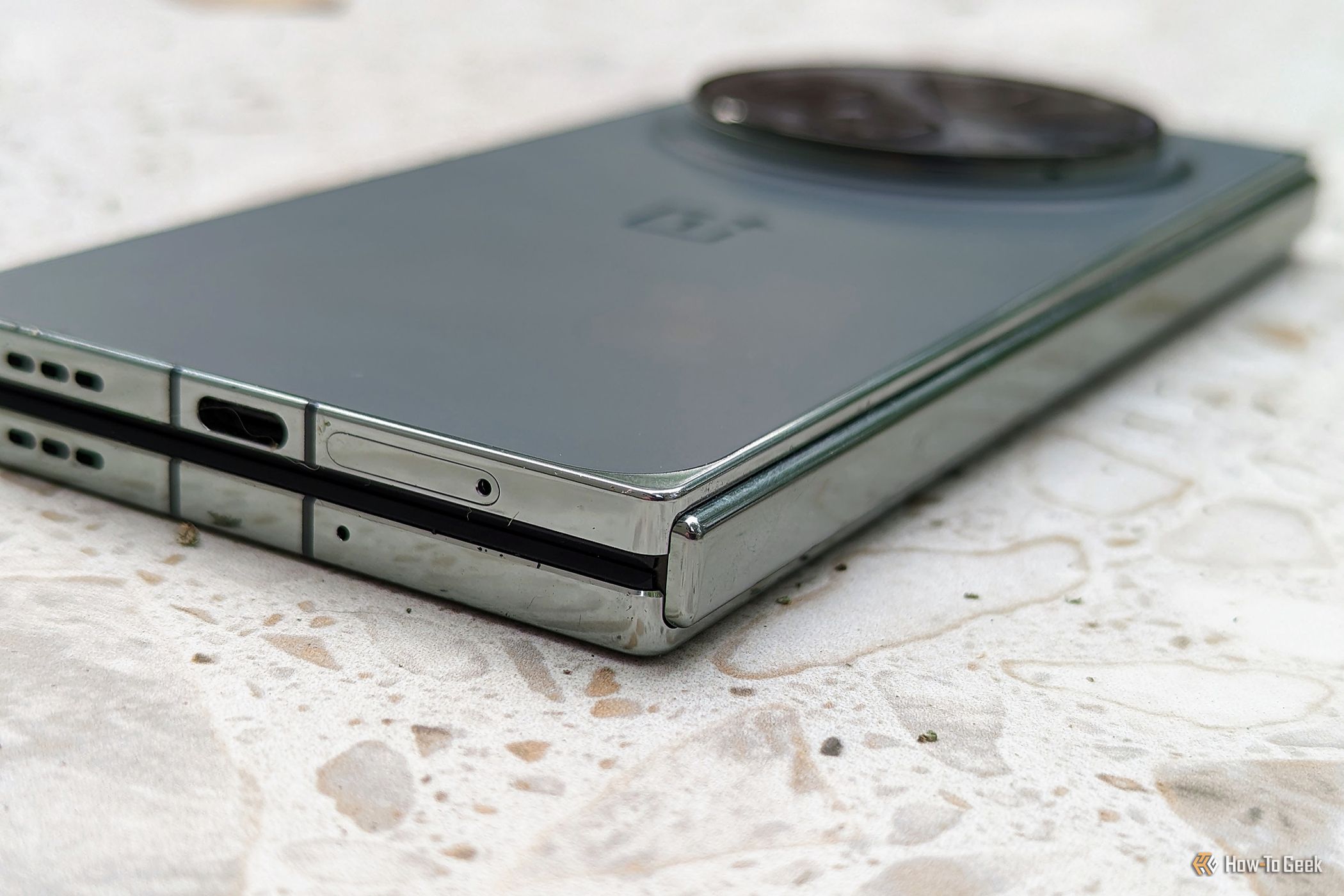
Joe Fedewa / How-To Geek
The result of all that engineering is a device that weighs (239g/245g) as much as some regular ol’ non-folding phones. And it doesn’t appear to have come at the cost of durability or feel, either. In my two weeks with the OnePlus Open, I accidentally dropped the phone from terrifying heights a couple of times (including into a sink of running water). I’m happy to report it survived without a scratch. The water resistance is only IPX4—several levels below the IPX8 rating on the Galaxy Z Fold 5 and Pixel Fold.
My only experience with foldable phones up until this point has been with the vertical variety. They can fold into an impressively small footprint, but they tend to be pretty thick when folded. The OnePlus Open is only 11.7mm thick when folded. For comparison, the Galaxy Z Flip 5 is 15.1mm thick when folded, and the Pixel Fold is 12.1mm. However, there’s a pretty big caveat to the Open’s thickness dimension—both figuratively and literally.
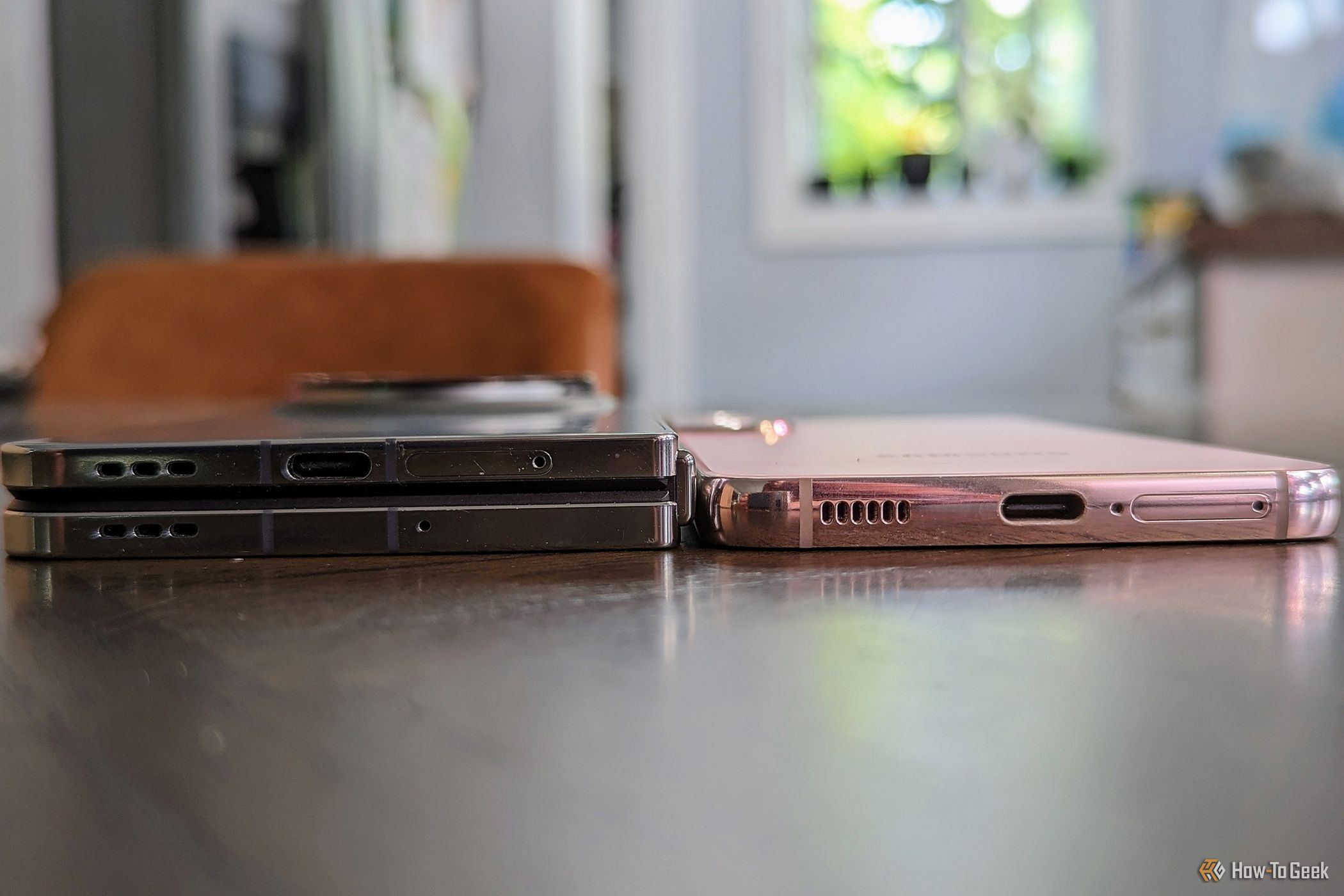
Joe Fedewa / How-To Geek
OnePlus Open / Samsung Galaxy S22
OnePlus does not take the camera bump into consideration. By my measurement, that adds an extra 5mm to the thickness. In fairness, the camera bump didn’t make the phone feel super thick. Most of the time it felt like just a normal phone when folded in my hand or pockets. That is precisely why camera bumps exist.
That being said, the camera module is one of the few things I didn’t like about the OnePlus Open. It takes up a lot of space on the back of the phone. So, to hold the Open comfortably, I either had to scrunch my fingers to the bottom two-thirds of the device, or smudge the camera lenses with fingerprints. The most annoying thing about the camera bump, though, is how the device sits on flat surfaces. In phone mode, it’s propped up nicely toward you, but in tablet mode it’s super wobbly.
Close
Functionally, the hinge felt solid and strong. Like most foldable phones, it doesn’t fold open completely flat, but that’s not something I noticed until I specifically looked for it. The hinge is strong enough to hold the display open at a max of around 135 degrees in “laptop mode,” which is good enough for video calls.
Overall, I was very impressed with the design and build of the OnePlus Open. Before using a foldable like this, I was worried they would feel too bulky and heavy in my pocket. That was not the case with the OnePlus Open at all. I primarily used the phone with the back half of the included case and it still didn’t feel overly chunky. (The case is two separate parts.) How it will hold up in the long term with OnePlus’ material choices is yet to be seen, but I’m optimistic.
OnePlus Open Displays: Beautiful and Surprisingly Flat
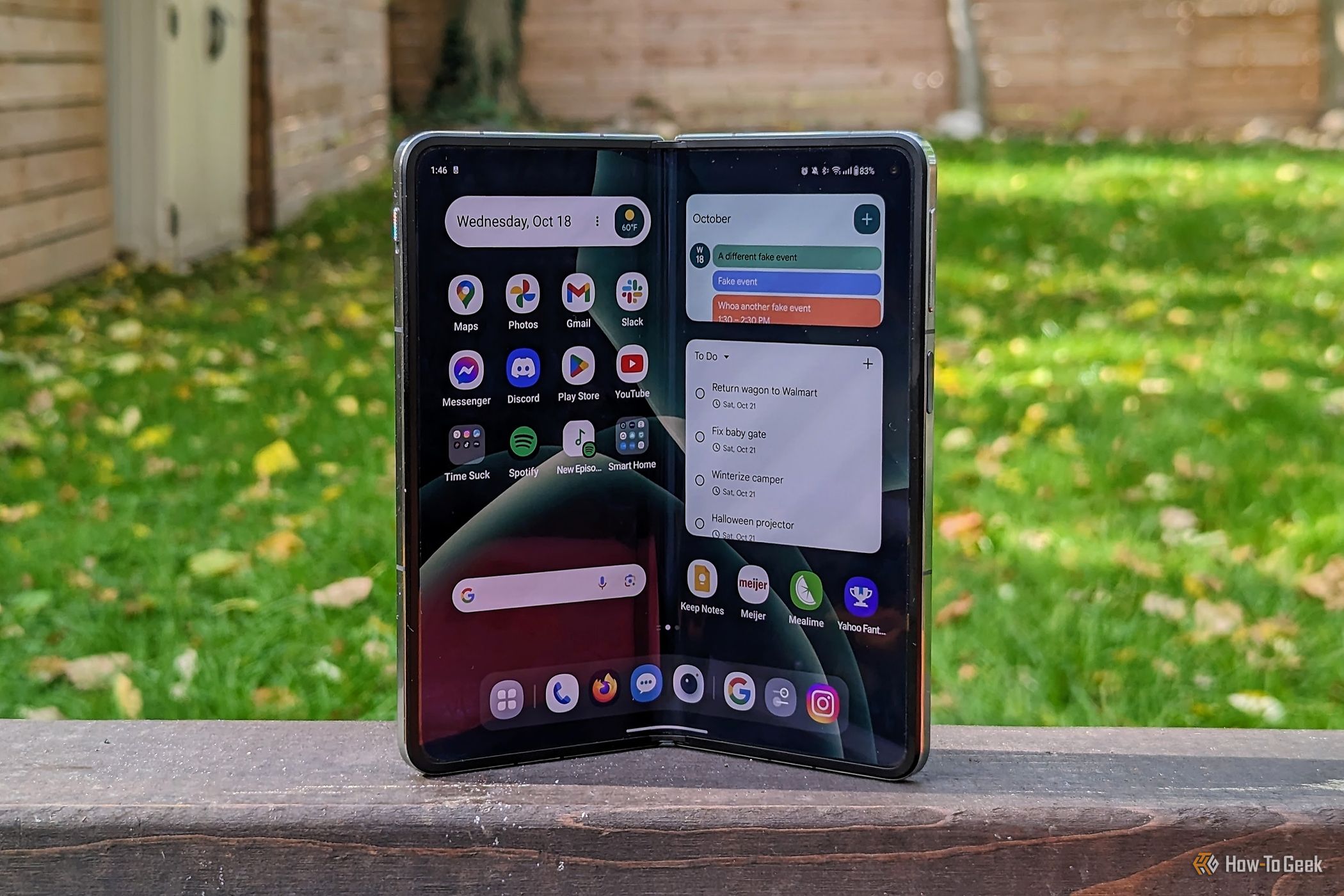
Joe Fedewa / How-To Geek
The OnePlus Open has a 6.3-inch outside display with a resolution of 2484 x 1116 and a 20:9 aspect ratio. The interior display is 7.8 inches with a 2440 x 2268 resolution and nearly a 1:1 aspect ratio. Both displays are capable of up to 120Hz refresh rate and 2800 nits at peak brightness.
There are two camps for aspect ratios on foldable phones. The Galaxy Z Fold 5 has a tall and narrow outside display with a taller-than-wide inside display. Meanwhile, the Pixel Fold’s outside display is closer to an old-school 16:9 phone, while the inside display is almost square (6:5). The OnePlus Open opted for the latter.
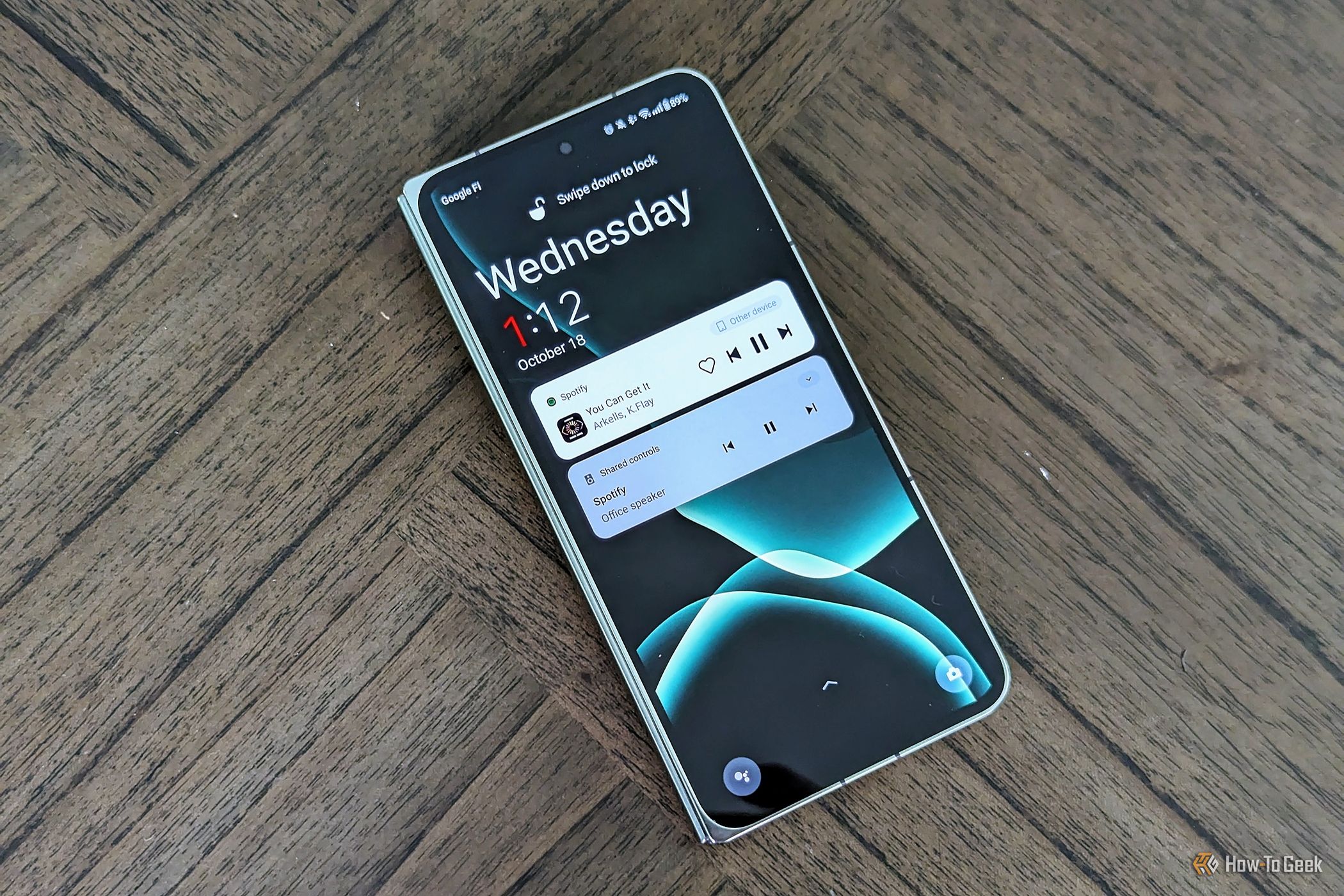
Joe Fedewa / How-To Geek
I really liked the aspect ratios of both displays on the OnePlus Open. When closed, the outside display felt like just a normal phone. In fact, it was easier to use than most normal phones. The Open is shorter and wider than my daily driver Pixel 7 when closed. Phone designs moved away from 16:9 screens when they expanded into the top and bottom bezels. I didn’t realize how much I missed that.
The technical aspect ratio for the inside flexible display is “1.0758:1”—that’s close enough for me to call it 1:1. I think this size makes a lot more sense for a foldable than Samsung’s taller-than-wide approach. The inside display actually felt like a tablet, not just a super wide phone. If I’m going to carry around a foldable device, that’s what I want it to be—a phone on the outside and a tablet on the inside.
Close
You can’t talk about a foldable display without mentioning the crease. People always say you stop noticing the crease on foldable displays after a while. That’s certainly true, but it’s not a justification that needs to be made with the OnePlus Open. The crease on this display is shockingly minimal. It’s barely noticeable even when specifically feeling for it.
Speaking of feel, the inside display is obviously not glass, but it didn’t feel overly soft or mushy. It accumulated smudges and fingerprints faster than the outside display, though. Size and flexibility aside, both displays looked great. The specs of the inside and outside displays are very similar, which makes for fluid transitions between the two. Oh, and unlike the OnePlus Nord N30 , you can actually see both displays in any direction while wearing sunglasses.
OnePlus Open Software: Practical Additions
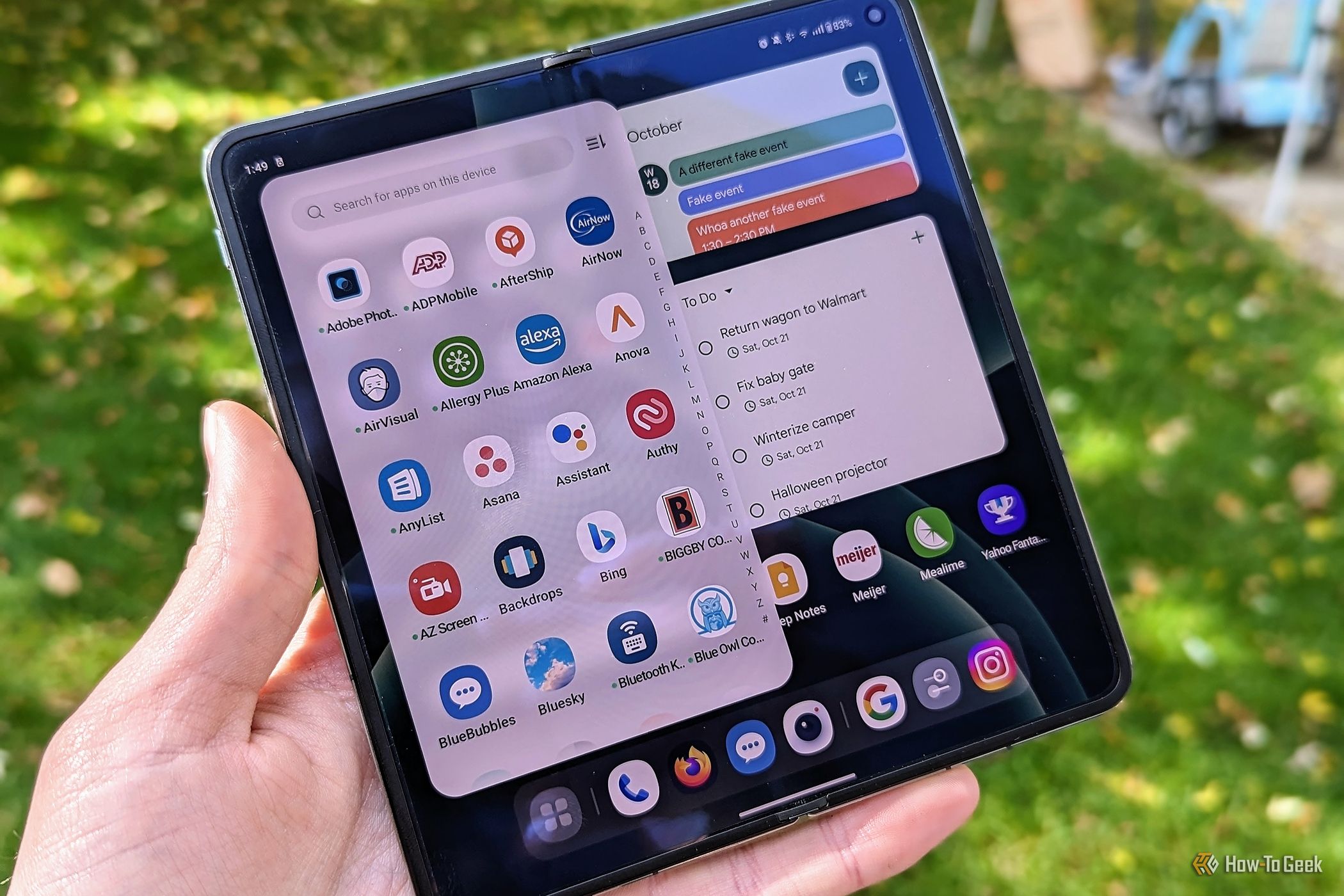
Joe Fedewa / How-To Geek
At the time of writing in October 2023, the OnePlus Open was running OxygenOS 13.2 based on Android 13. Software is incredibly important for foldables, and this is OnePlus’ first attempt at this form factor. My experience was mostly good, but there were some definite quirks.
There’s not much to say about the software on the outside display. It’s the regular OxygenOS experience for phones. I’m generally a fan of what OnePlus is doing with its software, but there are some obvious influences from other companies. One influence that I liked is the iPhone App Library-esque large home screen folders that can launch apps without opening the full folder. One I’ve never found particularly useful is the “Shelf,” which is a secondary screen exclusively for widgets. I don’t know why that exists when I can put everything I need on the home screen.
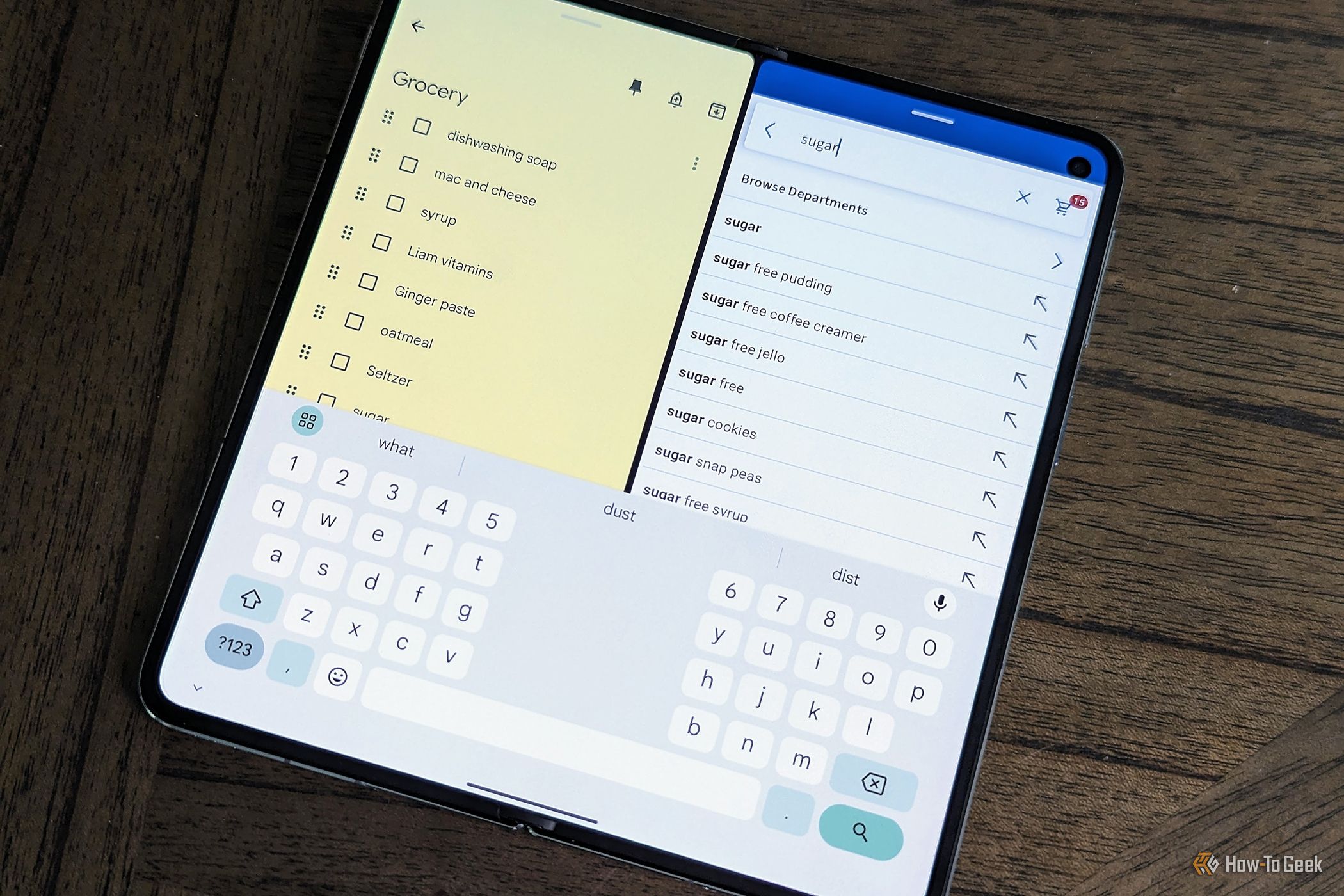
Joe Fedewa / How-To Geek
OnePlus released a tablet earlier this year , and much of the tablet optimization has been carried over to the OnePlus Open. The dock holds up to four icons, but when you’re in tablet mode it can expand to show an additional three recent app icons and a shortcut to open a floating app drawer. I found this to be a nice way to keep the dock simple in phone mode, but add more functionality when using the larger screen.
The default OnePlus system launcher worked really well for me. When opened to tablet mode, two home screen pages are shown side-by-side. It’s not quite a tablet layout as widgets are not allowed to span across the middle of the screen. I put my essentials on the first page for easy access from the outside display, and I used the second page for widgets and extras.
It’s possible to use a third-party launcher on the OnePlus Open, but there are two big caveats. First, the bottom taskbar is only present while using apps if you use the system launcher. That’s a normal restriction for all Android foldables at the moment. What isn’t normal is an apparent bug that makes split-screen mode impossible while using a third-party launcher.
Close
I could choose the first app to split, but then the OS would bug out when I tried to choose the second app. Strangely, this only happened while using split-screen on the inside display. It worked fine on the outside display regardless of the launcher. OnePlus sent out an update on October 16th and the bug was not addressed.
When the split-screen functionality did actually work, it was pretty great. You can have a maximum of four apps open on the screen at a time—three in the split-screen interface and one floating on top. OxygenOS does traditional two apps side-by-side a little differently than I’ve seen. Not only can you have them split evenly 50/50, but you can expand one app for a 70/30 experience. The smaller app gets pushed behind the display a bit to make more room, and it slides back over when you tap it. Pretty clever.
Close
I was surprised by how many apps adapted well to the dual displays. Android apps have a reputation as not being great on tablets, but that seems to be changing. Even Instagram, which notoriously doesn’t support the iPad, reconfigures its layout in tablet mode on the OnePlus Open. There’s just something cool about using an app in standard portrait mode on the outside screen, then opening the phone and seeing it blown up for the big screen.
Overall, I was impressed with OxygenOS on a foldable device. There are some features that I think I would genuinely miss if I switched to a Pixel Fold or Galaxy Z Fold. It’s not a perfect OS by any means, but the problems can be solved with updates. Oh, and OnePlus, please stop forcing a red lock screen clock on everyone.
OnePlus Open Performance & Battery Life: Awesome
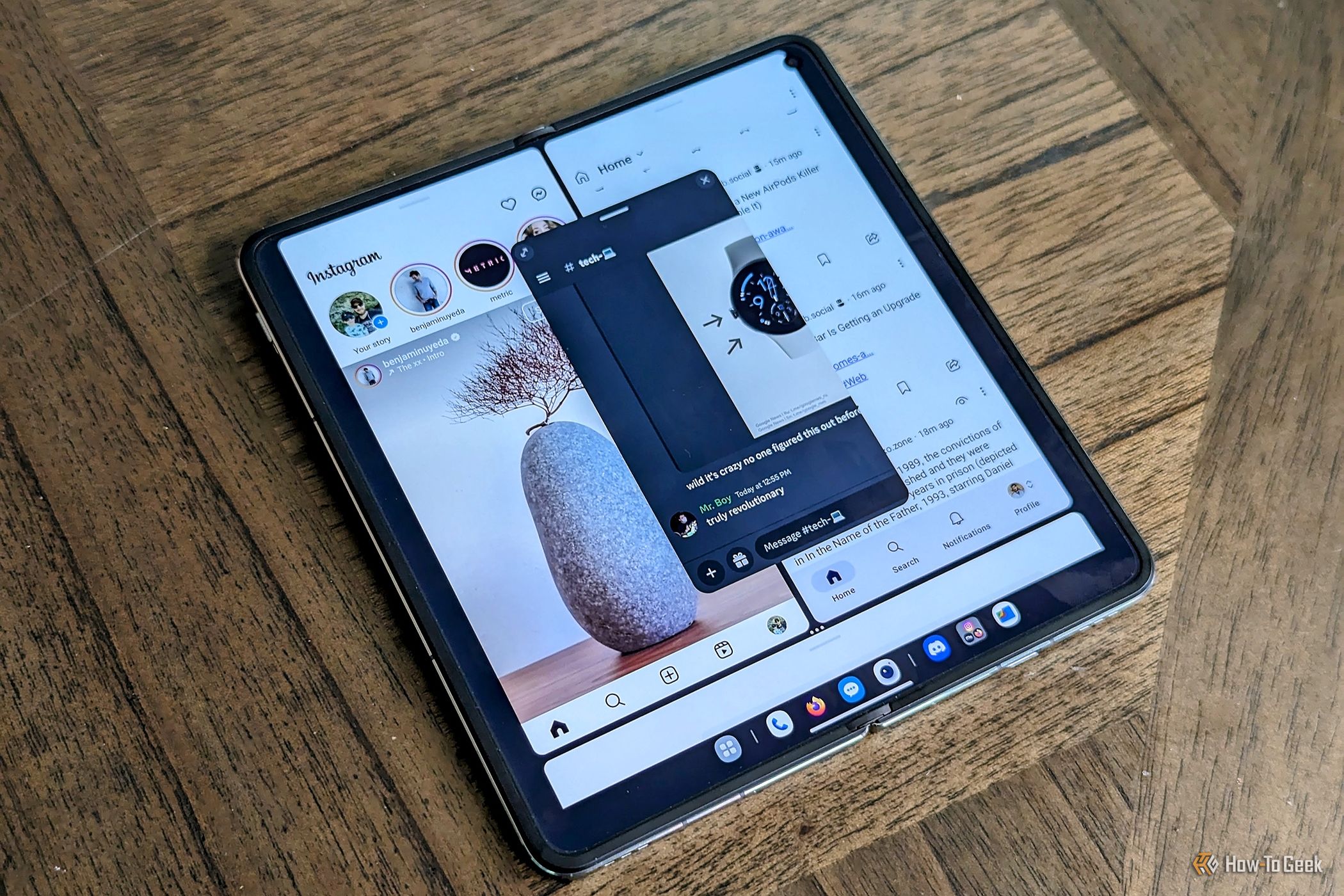
Joe Fedewa / How-To Geek
OnePlus has packed the Open with the latest flagship Snapdragon 8 Gen 2 processor from Qualcomm and 16GB of RAM. Let me tell you, performance is not something to worry about here, and that’s important for a device that is made for doing a lot of things at the same time.
I can’t overstate how incredible this form factor is for multitasking. And I don’t just mean boring, work-related productivity. One night, I was playing Jackbox in a Discord voice call while texting a friend. I had all three apps—Discord, Firefox, and Messages—open on the inside screen at the same time in split-screen mode. I didn’t notice any hiccups or stuttering anywhere. That’s an extreme example, but it just shows what’s possible on the OnePlus Open.
I was equally impressed with the battery life. The 4,805mAh battery had no trouble getting me close to six hours of screen-on time on heavy usage days. I never felt like I had to use the larger inside screen sparingly to make it through the day.
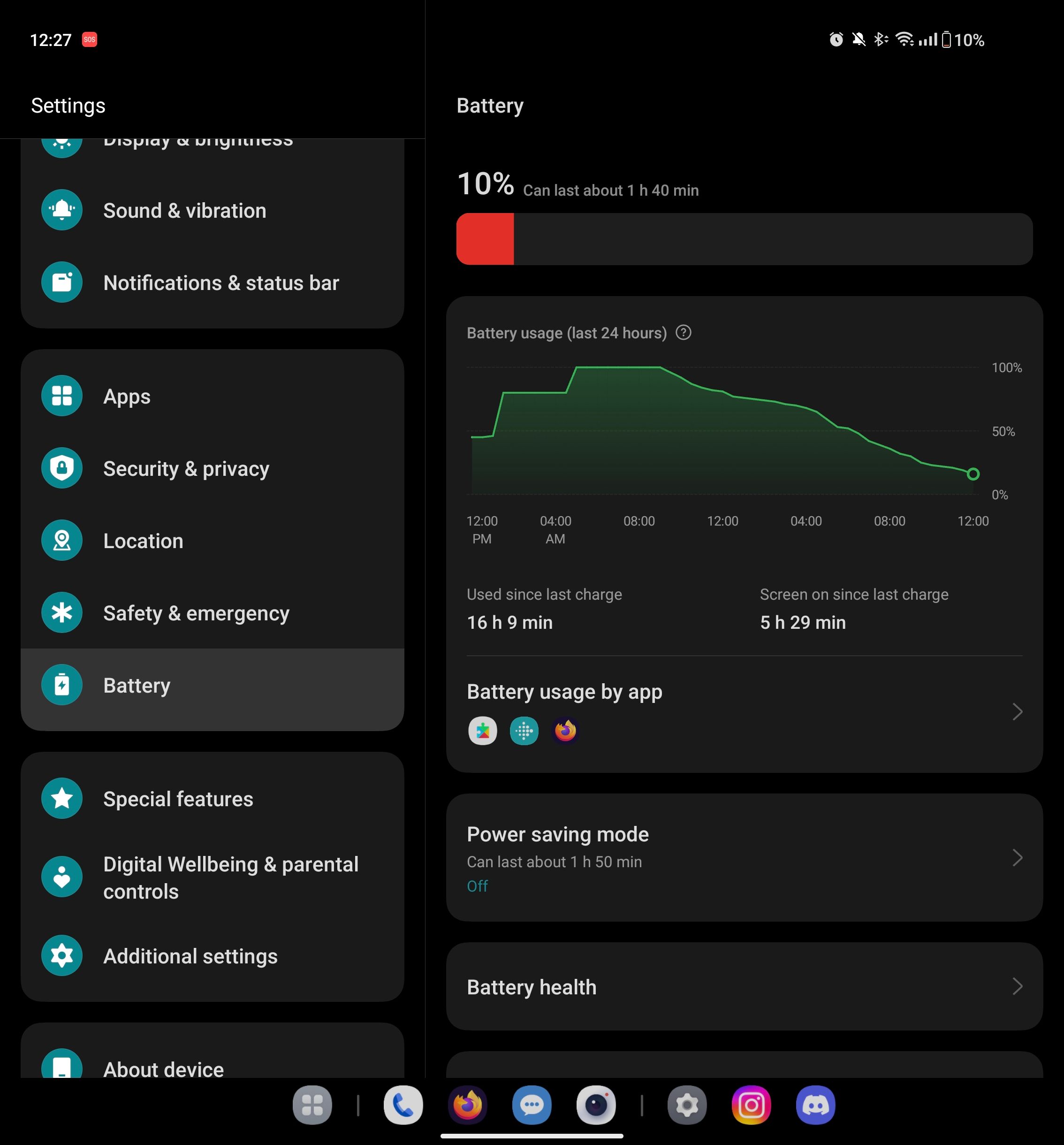
Like most OnePlus devices, the Open is equipped with the company’s “SUPERVOOC” fast wired charging. The 67W charging can take the battery from 1-100% in around 40 minutes, which is a pretty incredible feat. However, I have to admit, as cool as that is, I would much rather have wireless charging. With battery life this good, I never really needed a super fast top-up at an inopportune time.
Performance and battery life is a category where I feel like the less I have to say, the better. To be a successful tablet-like foldable, the OnePlus Open needed to be powerful and it needed to have a long-lasting battery. Check and check.
OnePlus Open Camera Quality: Pretty Good For OnePlus
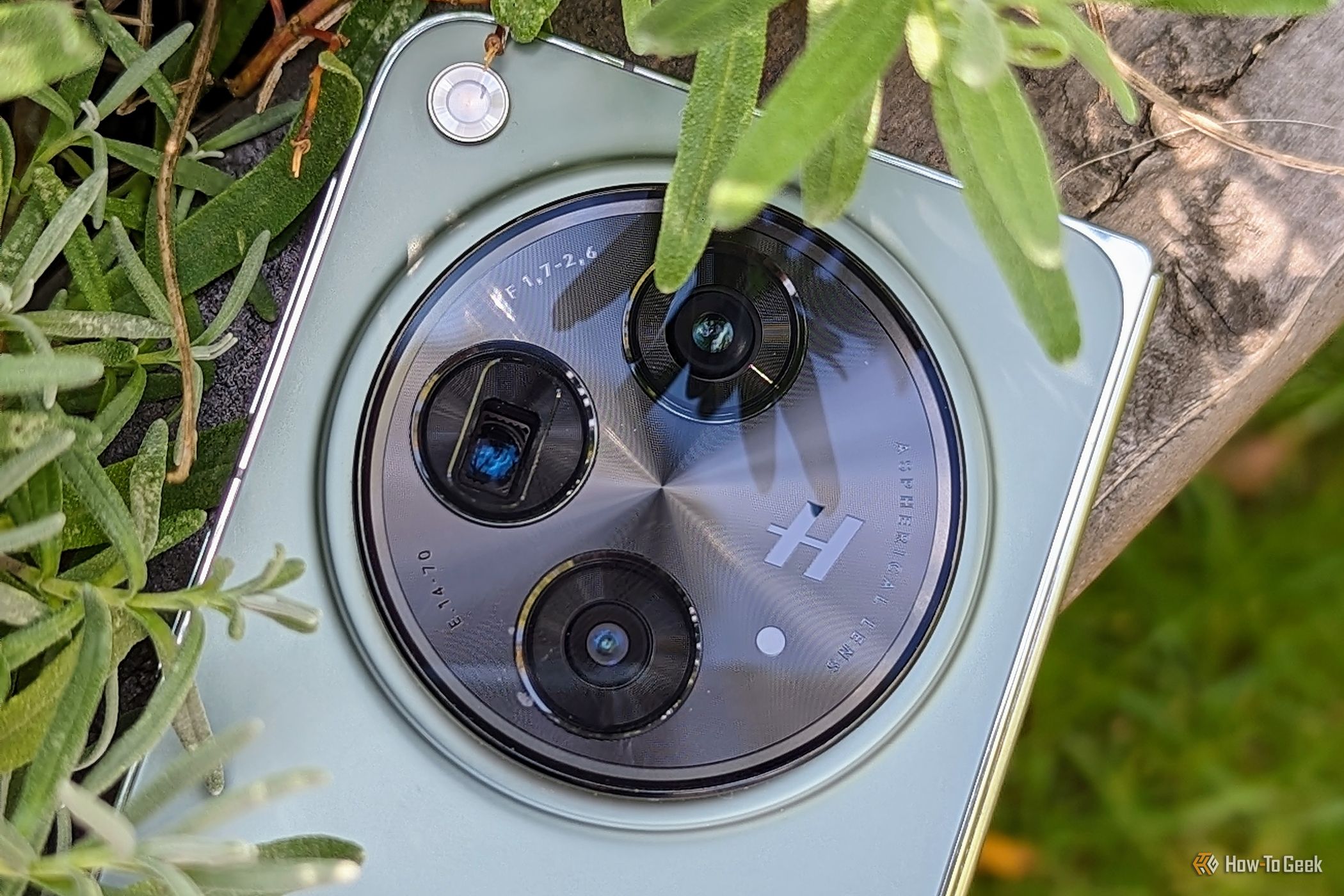
Joe Fedewa / How-To Geek
OnePlus excels at a lot of things, but I don’t think the company has ever truly nailed cameras. That’s the case again with the OnePlus Open, but it’s very close to being great.
The main camera in the gigantic bump is 48MP with f/1.7 aperture. It’s joined by a 64MP 3x optical zoom telephoto camera with f/2.6 aperture and a 48MP wide-angle camera with 114-degree field-of-view and f/2.2 aperture. I was mostly happy with the photos and videos I was able to get with this camera, but it had one frustrating issue.
Several of the photos I took were coming out pretty blurry if there was the slightest bit of movement. Looking into the metadata, the exposure time seemed to drop very low if the environment was the slightest bit dark. This made it hard to take photos of my son and dog moving around indoors.
Close
The other issue I had with the cameras was some apparent post-processing. Compared to my Pixel 7, which I consider to be one of the best smartphone cameras , the OnePlus Open’s photos look much brighter and more saturated. That’s not something I necessarily would have noticed without looking at the photos side-by-side, though. On their own, the photos looked fine—it’s just clear that I’m not seeing the most true-to-life colors.
I’m leading off with some negatives here, but that’s only because there weren’t many of them. The overall camera experience is pretty dang good. OnePlus says the new Sony LYT-T808 sensor is “on par with the 1-inch Sony IMX989 or that of the Samsung Galaxy S23 Ultra.” I would agree that the results remind me of a high-end Samsung Galaxy phone.
I’ve found that I use telephoto cameras nearly as much as I use the main cameras on phones, and the 3x optical zoom on the OnePlus Open worked great. I just wish OnePlus wouldn’t put so many zoom increments in the camera app—I never wanted to use the fake 2X or 6X digital zoom, and that includes the buzzword “120X Ultra Red Zoom.”
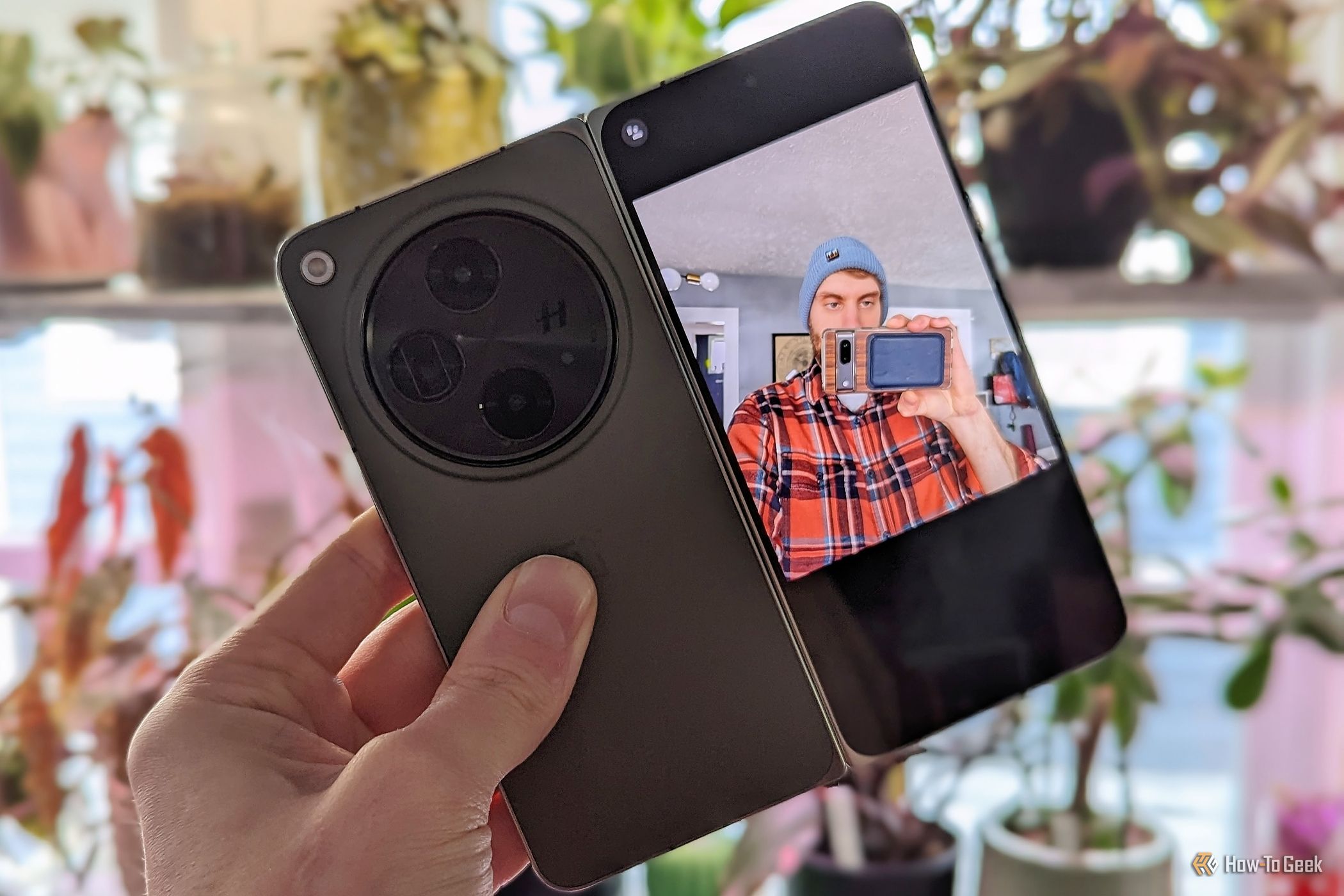
Joe Fedewa / How-To Geek
One neat feature is the ability to see the viewfinder on the outside display while using the rear cameras. However, OnePlus clearly did not intend for this to be used for selfies since there are no controls on the outside display. That would be a nice feature to have, rather than awkwardly trying to reach the volume buttons and not accidentally touching the larger display to take a selfie with the big boy cameras.
Overall, I think this is probably one of—if not _the_—best camera setups OnePlus has shipped. That being said, it seems like no matter which phone I review, I always end up preferring the photos from a Pixel phone. Take that for whatever it’s worth.
Should You Buy the OnePlus Open?
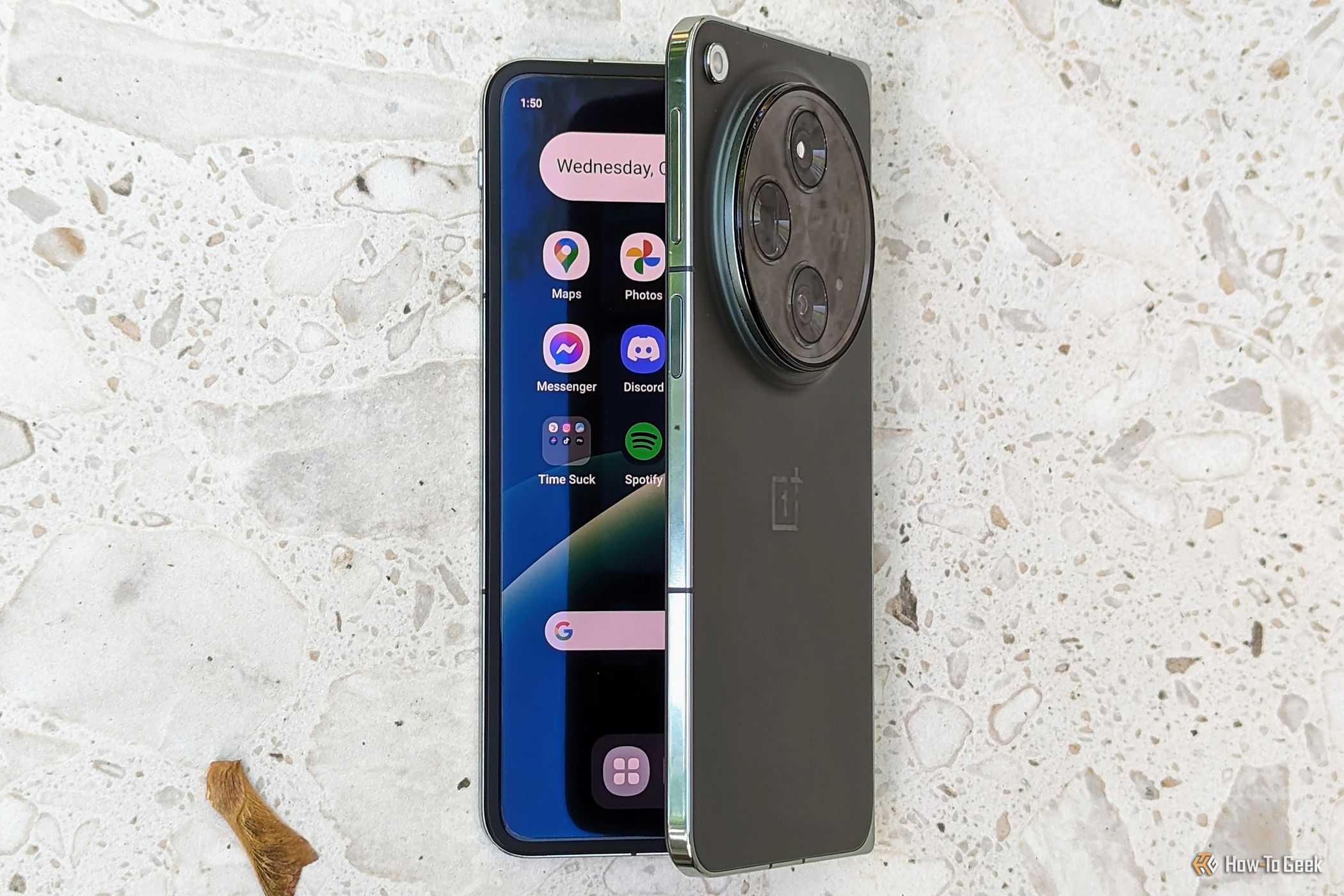
Joe Fedewa / How-To Geek
As mentioned, the OnePlus Open is the first tablet-like foldable I’ve used. I’ve been skeptical of how useful this form factor would actually be for me. Do I really need a tablet at the ready on me at all times? The vertical flip-style foldable phones seemed more practical. I think I’m a believer now.
The real magic of the OnePlus Open is its size. That was really my concern about this style of foldable. Most of the time, when I was doing stuff out in the world, I didn’t open the full display. So, if the device was super heavy, it’d feel like carrying around extra weight for no reason. The fact that it’s lightweight and thin enough to feel like a typical smartphone makes the inside display a cherry on top.
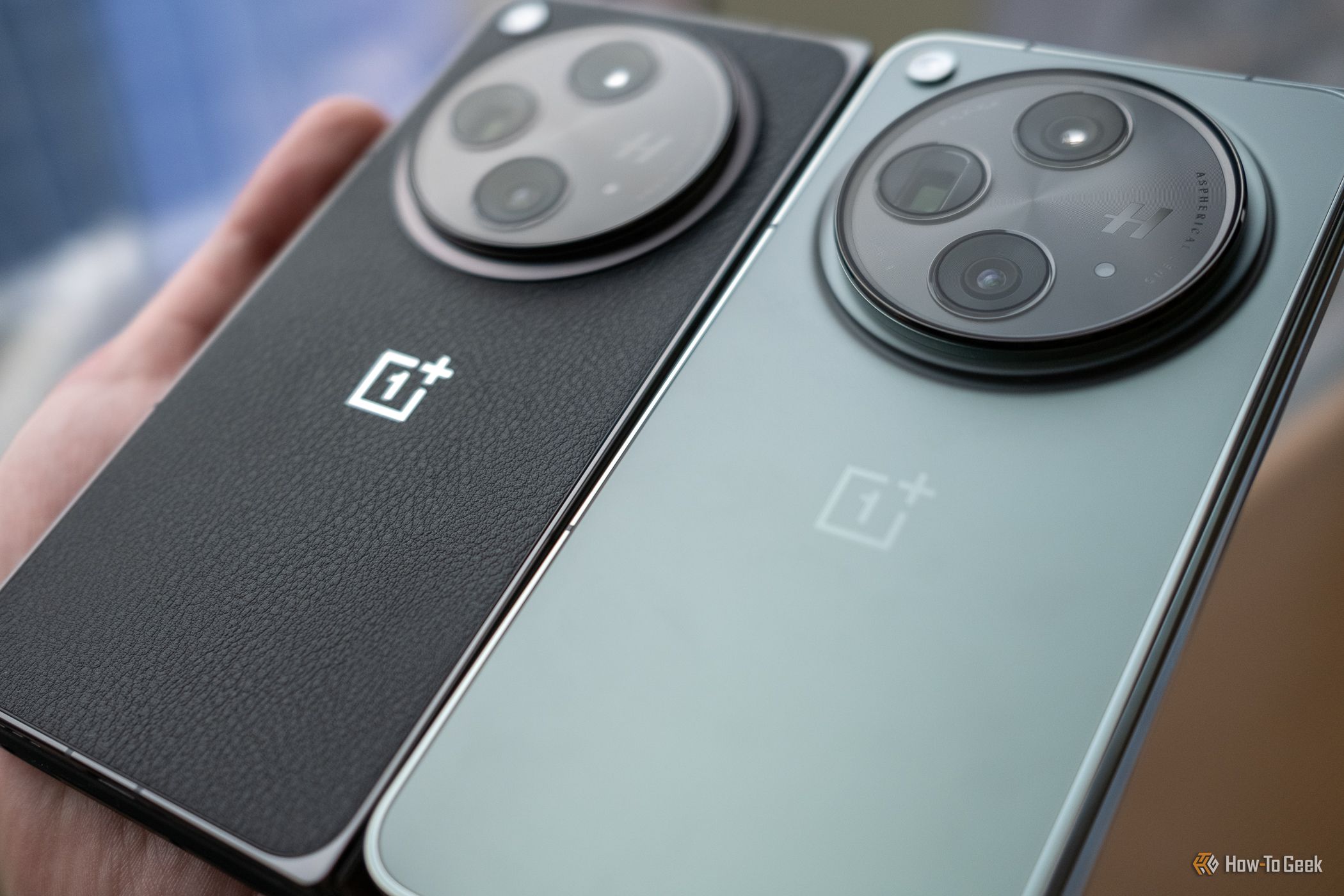
Justin Duino / How-To Geek
Of course, the OnePlus Open is not the only phone to bring this concept to the market. However, at $1,699, it’s $100 cheaper than the Pixel Fold or Galaxy Z Fold 5. The extra $100 gets you wireless charging and an IPX8 rating. $1,699 is still not cheap, but it would be pretty easy to spend that much on a phone and tablet separately. I don’t think I truly appreciated that aspect of this type of foldable until I had one in my hands. There’s a reason why my iPad has been getting dusty since I started using the OnePlus Open.
The truth is I wasn’t expecting to like the OnePlus Open this much. This is the company’s first foldable phone and it seems to have knocked it out of the park. I’m more excited about the future of foldables now that OnePlus has entered the ring. Consider my eyes opened.


OnePlus Open
8/ 10
The OnePlus Open is a tablet-like foldable phone. It features a phone-sized outside display and nearly square inside display, along with a massive camera array on the back.
SoC
Qualcomm Snapdragon 8 Gen 2
RAM
16GB
Storage
512GB UFS 4.0
Battery
4,805 mAh
Ports
USB Type-C 3.1
Operating System
Android 13 (OxygenOS 13.2)
Front camera
20 MP f/2.2 91-degree FOV 0.7 µm pixels, 32 MP f/2.4 88.5-degree FOV 0.7 µm pixels
Rear camera
48 MP f/1.7 85-degree FOV 1.12 µm pixels, 64 MP telephoto 3X optical zoom f/2.6 33.4-degree FOV 0.7 µm pixels, 48 MP f/2.2 114-degree FOV 0.8 µm pixels
Dimensions
153.4 mm x 73.3 mm x 11.7 mm (Emerald) 11.9 mm (Black) folded, 153.4 mm x 143.1 mm x 5.8 mm (Emerald) 5.9 mm (Black) unfolded
Colors
Voyager Black, Emerald Dusk
Weight
239 g (Black), 245 g (Emerald)
IP Rating
IPX4
Security
Side-mounted Fingerprint Sensor
Cover display
6.3-inch Super Fluid AMOLED with LTPO 3.0, 2484 x 1116, 431 ppi, 1400 / 2800 nits, 10-120 Hz dynamic
Interior display
7.82-inch, Flexi-fluid AMOLED with LTPO 3.0, 2440 x 2268, 426 ppi, 1400 / 2800 nits, 1-120 Hz dynamic
Expand
Also read:
- [New] 2024 Approved Earnings Expansion on Glamour Channels
- [New] Enlarge Your Video's Thumbnail on YouTube Easily for 2024
- [New] How to Combine Videos Into One on iPhone
- [Updated] 2024 Approved Unveiling the Art of Smoothing Zoom Screenshots
- [Updated] In 2024, Comparing YouTube and Dailymotion Notable Contrasts
- [Updated] In 2024, The Art of Eluding Home School Video Content
- Adventure Videography Supplies for Travelers for 2024
- Discover Top-Ranked Affordable Collegiate Computers: Beyond MacBook and ThinkPad, Save Big with Our Exclusive Find!
- Experience Ultimate Convenience with a Discounted, Multipurpose 10-Port Docking Station | Exclusive Offer on GadgetGuruStore.com
- Exploring the Cutting-Edge iPad App That Makes You Consider Buying an Apple Pencil - ZDNet's Take
- Get Immersed in Baldur's Gate 3 on an M-Series Mac with Crossover
- HP Touchbook with Companion Wireless Mouse & Office 365 Suite - Complete Tech Bundle at $400 Special Offer
- In 2024, Screenplay Excellence Genre-Based Achievement Showcase
- Microsoft's Revolutionary AI Chip Outshines Apple MacBook in Cutting-Edge Showdown - An Exclusive ZDNet Revelation
- Stunning Display in a Budget-Friendly Ultrabook: A Review of an Unbelievably Affordable High-Quality Screen
- Top-Rated Ultralight Laptop Perfect for Telecommuters: A Detailed Review
- Ultimate Guide to Choosing the Perfect Student Laptop: Insider Ratings & Testing | SmartTechReview
- ZDNet Tests Honor MagicBook 14: The Highly Efficient and Affordably Priced 14-Inch Device with Enhanced Graphics Performance
- ZDNet Unveils the Ideal Lightweight Laptop for Remote Workers - A Comprehensive Test Report
- Title: Unfolding Excellence: OnePlus's Answer to Bendable Discomfort
- Author: George
- Created at : 2024-12-25 21:10:01
- Updated at : 2024-12-27 18:42:04
- Link: https://hardware-tips.techidaily.com/unfolding-excellence-onepluss-answer-to-bendable-discomfort/
- License: This work is licensed under CC BY-NC-SA 4.0.